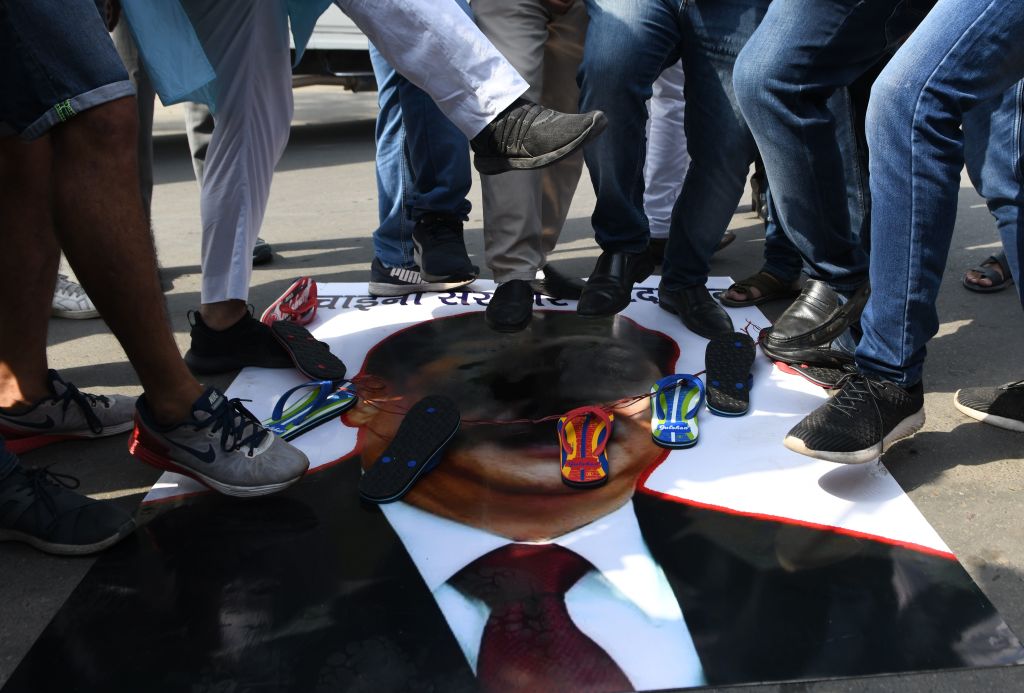The mood in India simmers with retaliation following the death of at least 20 Indian soldiers in clashes with their Chinese counterparts on the decades-long unsettled border between the two countries. And there is bewilderment too at the muted reaction from India’s prime minister, Narendra Modi.
When Modi first came to power, he promised a ‘muscular’ foreign policy. Yet when it matters most, this seems to be missing in action. On Friday, Modi said that ‘neither is anyone inside our territory, nor is any of our post captured’. This appeared to contradict previous and subsequent statements by his own defense and external affairs ministries and the Indian army. So what’s really going on?
The answer lies in Modi’s tense relationship with Xi Jinping, who is as antagonistic a leader as communist China’s founding father, Mao Zedong. Yet he (like his predecessors) is always wary of an uprising a la Tiananmen Square. Rumors abound regarding Chinese people’s unease about enhanced state surveillance, not to mention misgivings about COVID-19. In such circumstances, the communist party have, in a tried and tested manner, sounded a diversionary drumbeat, with a National Security Law in Hong Kong, bellicosity against Taiwan and now a spilling of Indian blood.
Back in 2014, an undiplomatic Modi irritated Xi with veiled criticism of China on Japanese soil. He has also stirred the pot with his subsequent messages to western companies in China, urging them to relocate to India. After two decades of calm ushered by the 1993 Peace and Tranquillity Treaty, Chinese animosity has also been further aroused by Modi’s tilt towards the United States — which has also annoyed India’s most important defense supplier, Russia. India’s former ambassador to China Nirupama Rao is right when she says this latest Chinese aggression is ‘a personal message to Modi’.
For Modi, things are only going from bad to worse. His visceral espousal of militant Hinduism has split and weakened a traditionally secular India. His attempt to appease Xi has exploded in flames; 18 meetings between the pair have failed to establish chemistry between two culturally, linguistically and temperamentally different people. To make matters harder, among India’s neighbors Pakistan is an adversary and close ally of China. Even Nepal, with which New Delhi has enjoyed a close relationship and a free trade relationship, has drifted apart from Modi’s India. None of the other P5 countries in the UN security council has lent support, forcing India’s defense minister, Rajnath Singh, to rush to Moscow for reassurances.
So what will Modi do? His options are limited. War is expensive and even a limited battle would be debilitating for India. Modi ran the Indian economy into the ground long before COVID interfered. The devastating impact of the health emergency, which is spreading in India and could postpone a return to economic normalcy to next year, means a crippling as well as incendiary unemployment of 20-30 percent or 100-150 million people. Xi sensed this fragility and exploited it ruthlessly.
[special_offer]
India extracted freedom from Britain in 1947 by virtue of a non-violent movement. The country’s first PM Jawaharlal Nehru subsequently fashioned a foreign policy of non-alignment or equidistance from the Cold War between East and West. In that spirit, he spoke of a ‘mutual respect for each other’s territorial integrity and sovereignty’, ‘mutual non-aggression’ and ‘peaceful co-existence’ among the principles to govern bilateral relations, which the Chinese accepted in the form of the Panchsheel (five virtues) Treaty in 1954.
Modern China’s worldview, however, was born out of suspicion of foreign powers and consequent insecurity, which translated to a military build-up and expansionist designs. In 1951, it annexed Tibet, creating a 2,200 mile between China and India. It then challenged the demarcation dividing the two as drawn by British India’s foreign secretary, Henry McMahon, in 1913-14. Beijing had signed a draft of this tripartite accord involving Britain and Tibet, but did not ratify it. China subsequently claimed a significant chunk of north-eastern India, which it defined as ‘South Tibet’, disregarding the McMahon Line as a result. In 2008 David Miliband as British foreign secretary (unhelpfully for India) told the House of Commons the understanding was ‘an anachronism’.
Xi has clearly bided his time and has chosen an optimum time to act. When China invaded the disputed part of India’s north-east in October 1962, it quickly retreated under international pressure. US president John Kennedy rushed to help India, and so did Britain. It reflected international cooperation from Washington to Moscow with India and a wide respect for Nehru, which Modi sorely lacks. And as a result, India is paying the price.
Ashis Ray is a former South Asia bureau chief for CNN. This article was originally published onThe Spectator’s UK website.


















